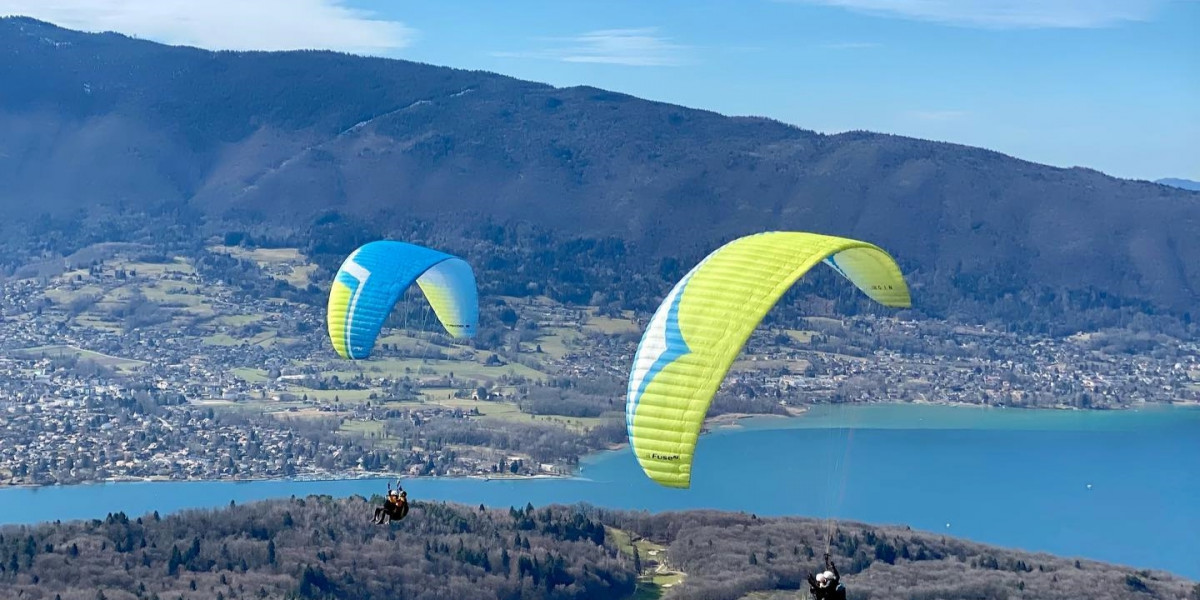Paragliding gives you a wonderful feeling of freedom. Both a leisure activity and a sport, it gives the impression of flying and allows you to observe beautiful landscapes. To paraglide, you need to take into account a number of parameters such as the take-off technique, the weather conditions and the landing. Adrenaline Paragliding presents here the tips to get your paraglider off the ground, but also some important elements to practice this activity well.
How does a paraglider take off from the ground?
A paraglider is a free and light aircraft that usually takes off from a slope, running up a hill or cliff. The pilot first places the wing on the ground and spreads it out in a proper corolla shape, facing the slope. The pilot should then get into the harness and do all the usual checks. The take-off can be done when a light wind is blowing up the slope in front of the pilot of the paraglider with all the appropriate weather conditions.
Inflate your paraglider
The paraglider take-off starts with the inflation phase. As a pilot, you will pull the risers forward, which will raise the glider above your head to a flying position. You can take off downhill to get enough air to fill and inflate the paraglider wing. This is called a dynamic take-off. Another technique is to use the wind to fill and lift the wing without moving: static take-off.
The back-to-face launch is the classic method, the one recommended for beginners. The pilot holds a brake and the leading edge risers in each hand. The leading edge is the first part of the wing to be pulled out as the pilot moves forward on the slope, leaning forward. The impulse must be strong enough to inflate the wing and make it rise above the pilot. Just before the wing reaches the top of his head, he should release the risers.
Check your equipment
All equipment should be checked before inflation to ensure a safe flight. You should have a checklist to check such as :
- harness attachment points,
- helmet, radio,
- the reserve parachute,
- the absence of a key in the lines, etc.
During take-off, as soon as the wing comes overhead, it must be slowed down with the brakes to maintain its position. In a few seconds, the pilot checks that the wing is deployed correctly and that there is no key in the lines: this is the dwell phase.
Wait for the right conditions
Certain conditions must be met for a successful paragliding flight. You will not be able to fly when the wind is too strong or when there is turbulence. It is therefore essential to watch the sky for wind strength and consistency, as well as for dark clouds that indicate stormy conditions.
As soon as everything seems to be in order, the pilot should run with large steps to avoid shaking the wing too much. At a certain speed (about 30 km/h), the wing will have enough lift to support the pilot's weight. The pilot then starts to fly away when the slope is greater than the angle of flight of the wing. As the pilot pulls away, he sits properly in the harness and now begins the flight phase.
Paragliding: the importance of wind speed
Paraglider flight is greatly influenced by the wind speed. If the wind is too slow, the glider cannot get off the ground. If the wind is too strong, it will make the glider unstable, which can disrupt the flight by blowing the glider off course.
This can lead to a disruption in piloting by blowing the glider out of its flight path. A minimum speed of about 10-15 km/h is required for take-off, while a maximum speed of 40 km/h is required for safe flight. Wind speed also affects the rate of ascent and descent. When the wind is strong, the glider climbs faster. Conversely, a weak wind means a slower descent. We tell you more about the wind requirements for paragliding in one of our previous articles.
When the pilot is in the sky, the aerodynamic lift and drag are what allow the glider to glide horizontally. Aerodynamic lift refers to the air pressure created by the curved shape of the glider's sides, which allows it to suck in the wing. The difference in pressure slows down the fall of the glider by making it glide. As for drag, it is the force of the air at the top of the glider that provides resistance to slow the glider down. The flight distance is determined by the ratio of lift to drag and is called the glide ratio.
Dynamic updrafts or thermals also play an important role in paraglider flight. Dynamic updrafts redirect the path of the wind to provide lift. Thermal updrafts are the warm air currents that rise and pull the glider along. During flight, speed and turns are the two elements to control the glider.
To slow down, you must use the glider's brakes, taking care not to lose altitude too quickly. To turn, you will operate the controls gently, as a sudden movement can cause you to lose height uncontrollably. To discover the joys of a paragliding take-off, trust the Adrenaline Parapente team.

